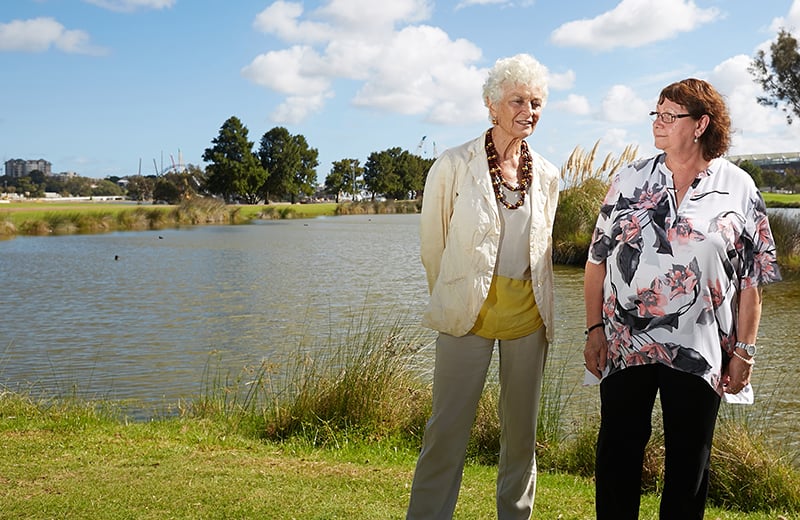A study confirming Aboriginal children are now 10 times more likely than non-Aboriginal children to be placed in out-of-home care has prompted researchers to call for urgent action to prevent further intergenerational trauma.
Researchers, including The Kids Research Institute Australia Patron and former Australian of the Year Professor Fiona Stanley, reviewed national data following anecdotal reports from the Aboriginal community that child protection authorities had increased the removal of Aboriginal infants from their families in recent years.
“Aboriginal community members have expressed concern that Aboriginal children are still being removed in high numbers by the Government, with some referring to this removal as ‘another stolen generation’,” the researchers wrote.
The researchers examined child protection data from the Australian Institute of Health and Welfare (AIHW) for the period 2012-2016, as well as linked data from the Western Australian Departments of Communities and Health. The latter was used to investigate the characteristics of Aboriginal families who had had an infant removed.
The study, published this month in the journal Child Abuse & Neglect, found:
- The number of Aboriginal children in out-of-home care increased 21 per cent from 2012 to 2017, while the number of Aboriginal infants – those under the age of one year – in out-of-home care increased 17 per cent between 2013 and 2016.
- Nationally, 56.6 per 1000 Aboriginal children were in out-of-home care in 2016, compared to 46.6 per 1000 in 2012. By contrast, 5.8 per 1000 non-Aboriginal children were in out-of-home care in 2016, up only slightly from the 2012 rate of 5.4 per 1000.
- Similarly, the number of Aboriginal infants in care rose from 24.8 to 29.1 per 1000 between 2013-14 – when the AIHW began collating data about children in out-of-home care under the age of one year – and 2016. Over the same period, the rates for non-Aboriginal infants rose from 2.6 to 3 per 1000.
The researchers found key risk factors leading to removal included substance use, mental health issues, children with disability, and children from the most disadvantaged communities. Substance abuse and mental health issues – well-recognised legacies of the intergenerational trauma brought about by the forced removal of children in the past – were particularly identified as factors in Aboriginal children being placed into out-of-home care.
Professor Stanley, senior author on the paper, said the findings made clear that rates of Aboriginal child removals and the disparity between Aboriginal and non-Aboriginal children were getting worse – and would continue to do so unless urgent action was taken to break the cycle of intergenerational trauma.
“While there is no question that infants and children need to be removed from situations where their safety is at risk, the current system is failing to address the pathways that result in those dangerous situations,” Professor Stanley said.
“If you look at it in the context of how traumatic the Stolen Generation was – the parenting, substance abuse and mental health problems that resulted and are still present three generations down the track – it is urgent that we now ensure that Aboriginal children who are removed are not further traumatised by this, and their children and grandchildren don’t have a similar pathway.
“That means ensuring they are placed in nurturing and supportive environments that are culturally as close to their families as possible – and supporting Aboriginal-controlled services to work with families and communities to overcome the challenges they are facing.”
Professor Stanley said Australia spent $5.8 billion on child protection services including out-of-home care in 2017-18 – and that didn’t take into account the billions spent on police, justice and corrective services, or health and mental health.
“Rather than being stuck in this cycle of spending billions of dollars at the ends of pathways, it has to be about early intervention and prevention, working with solutions put forward and led by Aboriginal communities,” she said.
“We are neglecting the obvious ways in which we need to address these issues, which is prevention of these problems from happening in the first place.”
Co-author Professor Rhonda Marriott, Pro Vice Chancellor Aboriginal and Torres Strait Islander Leadership and Research Director of Ngangk Yira, Murdoch University Research Centre for Aboriginal Health, said the findings showed little had been learned from previous inquiries and royal commissions, all of which had made recommendations – largely unheeded – aimed at healing the epidemic of intergenerational trauma.
“It’s a travesty that we have got to this point and people still aren’t asking the questions as to why and how should we be doing things differently,” Professor Marriott said.
“I know that child protection staff have goodwill and individuals certainly try their hardest. However they are under-resourced and have this perspective that their only responsibility is to the safety of the child, without also understanding how to support broken and traumatic family situations, and help parents be the best parents they can so that they may keep their child.
“Overall we have a broken system and it’s larger than the Department of Communities. What we have to do is work together to find a solution, with everybody at the table – because it can’t just be a solution that’s driven by government and government organisations. The Aboriginal community has to be at that table, with everyone owning the solution.”
The paper, Infant removals: The need to address the over-representation of Aboriginal infants and community concerns of another 'stolen generation', was a collaboration with Murdoch University and the Institute of Child Protection Studies at the Australian Catholic University. It can be read here.
-- ENDS –

